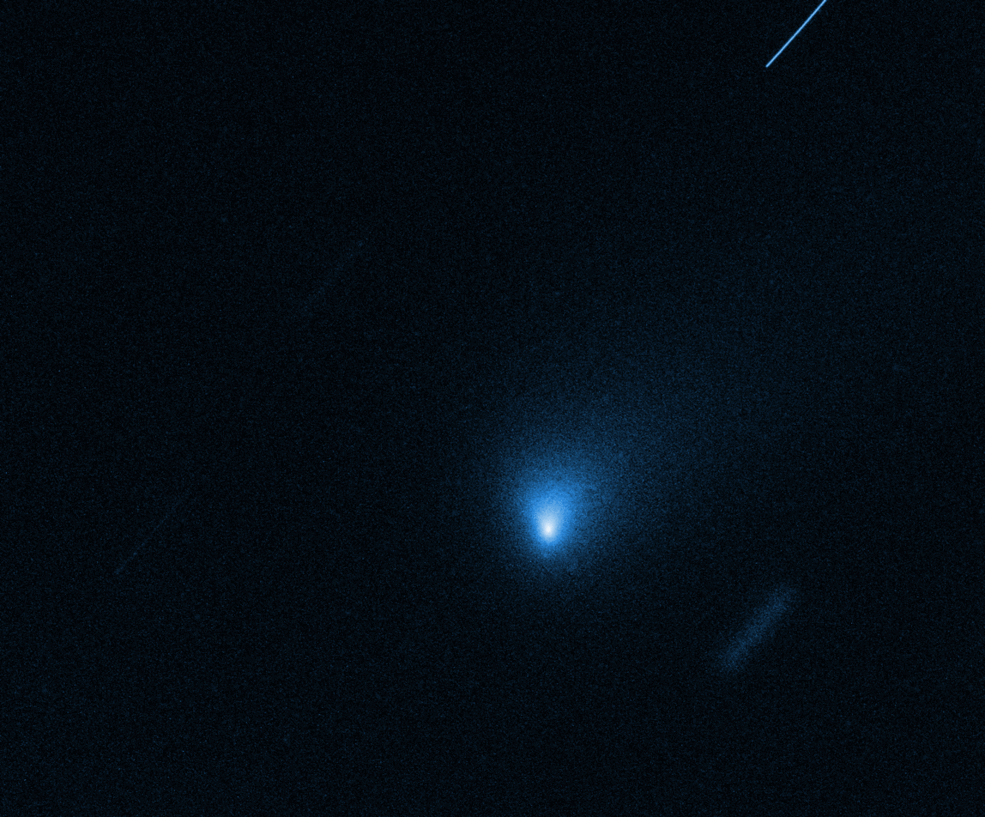Hubble image of comet 21/Borisov. Image: NASA, ESA, and J. DePasquale (STScI)
Want to see a comet from a completely alien star system? Check out this dazzling new snapshot from the Hubble Space Telescope, which is the “best look yet at an interstellar visitor,” according to NASA.The radiant comet, called 2I/Borisov, was discovered by Crimean amateur astronomer Gennadiy Borisov on August 30. Scientists following up on his observations rapidly calculated the bizarre trajectory of the comet, and its unusually high speed of 110,000 miles per hour.The International Astronomical Union confirmed that the comet was “unambiguously interstellar in origin” on September 24, meaning that it originally hails from another star system and crossed many light years to get here. Comet 21/Borisov is the first interstellar comet ever detected in our solar system, but it is not the only exile from another star that has turned up in recent years. In 2017, a strange spliff-shaped rock called ʻOumuamua became the first interstellar object known to scientists. While ʻOumuamua may have been a comet at one time, it now lacks the cometary atmosphere that gives comet 21/Borisov its reflective glow.These two objects offer a rare glimpse of the contents of distant star systems. Astronomers think there are probably thousands of other interstellar objects in the solar system that are too dark or distant to observe, but they are on the lookout for more.In the meantime, Hubble will keep its lenses trained on comet 21/Borisov as it hurtles toward its closest approach to the Sun on December 8."New comets are always unpredictable," said Max Mutchler, a NASA astronomer who is part of the observation team, in a statement. "They sometimes brighten suddenly or even begin to fragment as they are exposed to the intense heat of the Sun for the first time. Hubble is poised to monitor whatever happens next with its superior sensitivity and resolution."
Comet 21/Borisov is the first interstellar comet ever detected in our solar system, but it is not the only exile from another star that has turned up in recent years. In 2017, a strange spliff-shaped rock called ʻOumuamua became the first interstellar object known to scientists. While ʻOumuamua may have been a comet at one time, it now lacks the cometary atmosphere that gives comet 21/Borisov its reflective glow.These two objects offer a rare glimpse of the contents of distant star systems. Astronomers think there are probably thousands of other interstellar objects in the solar system that are too dark or distant to observe, but they are on the lookout for more.In the meantime, Hubble will keep its lenses trained on comet 21/Borisov as it hurtles toward its closest approach to the Sun on December 8."New comets are always unpredictable," said Max Mutchler, a NASA astronomer who is part of the observation team, in a statement. "They sometimes brighten suddenly or even begin to fragment as they are exposed to the intense heat of the Sun for the first time. Hubble is poised to monitor whatever happens next with its superior sensitivity and resolution."
Advertisement
